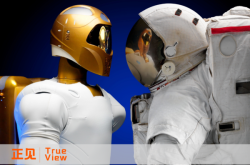Exclusive | Huawei Cloud Implements Organizational Restructuring, with R&D Team Merging into Huawei ICT
![]() 11/28 2025
11/28 2025
![]() 547
547
The R&D division of Huawei Cloud has been integrated into the Huawei ICT framework, specifically becoming the 'R&D headquarters' responsible for ICT products.
On November 26th, Huawei Cloud underwent a significant organizational restructuring, transferring its R&D unit to the Huawei ICT organization, which serves as the R&D headquarters for Huawei's ICT products. This move led to the establishment of five cloud R&D product lines in various domains: Infrastructure Cloud Services, Data & AI Cloud Services, Database Cloud Services, Security Cloud Services, and HCS. This marks a shift from a single cloud R&D entity to a diversified product line structure. It is reported that presidents for these cloud R&D product lines have already been appointed. Huawei Cloud and these newly formed cloud R&D product lines now operate under a contractual relationship similar to that of a client and a contractor.
Previously, Huawei Cloud's operational model, termed 'front-store-back-factory', encompassed both marketing services and product R&D. The ICT organization previously included product lines such as computing, storage, networking, and data communication. This adjustment signifies that Huawei Cloud's product R&D is now realigned with the Huawei ICT R&D headquarters. Following the restructuring, Zhang Ping'an assumed the role of Chairman of Huawei Cloud, while Zhou Yuefeng took on the position of CEO.
01
Internal Memo Elucidates Reasons for Restructuring
Shuzhi Qianxian learned that in an internal memo to employees, Huawei Cloud Chairman Zhang Ping'an provided insights into the background and rationale behind this organizational restructuring. After the restructuring, technologies such as network communication, computing, storage, and operating systems, which have been accumulated over the years in the ICT sector, can be shared across the board. Businesses like intelligent computing cloud and databases can now receive more timely resource support from the ICT division. Moreover, the contractual relationship is expected to drive R&D efforts to enhance product competitiveness.
Some Huawei staff members informed Shuzhi Qianxian that the issues highlighted in the memo indeed exist and require attention. For instance, previously, each product line submitted its underlying technology R&D needs to Huawei's 2012 Labs, but the resulting technologies were sometimes not shared, leading to redundant efforts. After the restructuring, with the tight supply of Ascend computing power, businesses like intelligent computing cloud and databases are anticipated to coordinate and secure resources more swiftly. Separating Huawei Cloud's 'front-store' and 'back-factory' operations will enable poor product sales or capabilities to directly prompt R&D to make prompt improvements, fostering better product development.
Some employees opined that dividing into five product lines, rather than maintaining a single cloud R&D entity, would facilitate better collaboration and alignment with other product lines within the ICT organization.
However, some believe that the crux lies in whether this strategic restructuring involves promoting AI. After all, Huawei Cloud's organizational restructuring comes at a critical juncture in cloud computing, namely the dawn of the intelligent computing era. Previously, the general-purpose cloud market was nearly saturated, and major cloud platforms are undergoing adjustments, with their strategies gradually becoming clearer.
In Alibaba Group's recently released financial report, Alibaba Cloud's growth was predominantly attributed to AI, with the original general-purpose computing segment nearing saturation. Industry veterans analyzed that Alibaba Cloud took a detour in the previous few years but then regained its momentum. As an internet enterprise, it leveraged its own computing power, applications, capital, and talent resources to invest in large-scale model R&D and drive cloud transformation through open-source and closed-source models.
Volcano Engine, under ByteDance, has embarked on the path of large-scale model token invocation. By the end of September 2025, the daily average Tokens invocation volume of the Doubao large-scale model had surpassed 30 trillion, a figure that has sent shockwaves through the industry. Observers noted that Volcano Engine does not emphasize cloud scale. Volcano Engine CEO Tan Dai once told Shuzhi Qianxian that the core elements are to possess high-quality models and AI-native tools and to establish some linkages with Douyin's commercialization.
For Huawei, the development of the Pangu large-scale model is primarily led by the 2012 Labs, with Huawei Cloud serving as the main force for market sales. Some Huawei employees conceded that although Huawei excels in the R&D and implementation of time-series models and CV models, it has indeed lagged in AI over the past two years.
From Huawei Cloud's recent organizational restructuring, it does not appear to have centered around large-scale models and AI, as seen in internet enterprises. One of the five major product lines is Data & AI Cloud Services. Observing these major product lines, each sector presents significant market space and profit potential. For instance, databases are a critical area amidst the backdrop of information innovation.
02
Beyond Cloud, Computing and AI Also Witness New Developments
Concurrently with Huawei Cloud's restructuring, Huawei has also implemented changes in chips and AI.
In the realm of AI, Yu Chengdong was appointed as the Director of Huawei's IRB in September this year, tasked with leading Huawei's AI business with the core mission of securing key victories in AI. In October, Yu Chengdong reposted Huawei's official Weibo recruitment post for 'global top AI talent' and has been immersed in studying AI and convening meetings daily, already taking decisive action. The investment costs for Pangu are also not allocated to any specific product organization but are borne by the company.
In terms of computing power, reports indicate that the air-cooled version of the Ascend 910C product has advanced to large-scale shipments, providing the necessary conditions for model training and inference.
Regarding chips, in the middle of this year, Huawei unveiled its internet strategy, with Rotating Chairman Xu Zhijun as the signatory. Internally, an OTT organization was established under Ascend to expand Ascend's business and provide technical services for the internet sector.
Some Huawei staff members noted that they observed Xu Zhijun adopting a more 'internet-style' approach during this year's Huawei Connect conference, where he changed from a suit to a T-shirt to introduce the evolution plan for the Ascend series chips over the next three years. Huawei will also open-source its CANN computing architecture, which competes with NVIDIA's CUDA, to expand its ecosystem. 'I believe the company has reflected on these issues and made adjustments accordingly,' he remarked.
Multiple Huawei staff members believe that moving forward, whether in the ToC or ToB sectors, Yu Chengdong needs to first pave a path for Huawei to enter the first tier in AI before driving other businesses to achieve a flywheel effect.






